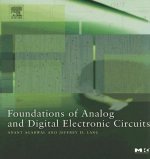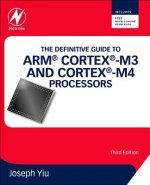
Kód: 05257853
Place Coding in Analog VLSI
Autor Oliver Landolt
Neurobiology research suggests that information can be represented by the location of an activity spot in a population of cells (`place coding'), and that this information can be processed by means of networks of interconnections. ... celý popis
- Jazyk:
 Angličtina
Angličtina - Vazba: Brožovaná
- Počet stran: 215
Nakladatelství: Springer-Verlag New York Inc., 2013
- Více informací o knize

5094 Kč

Skladem u dodavatele v malém množství
Odesíláme za 12-17 dnů
Potřebujete více kusů?Máte-li zájem o více kusů, prověřte, prosím, nejprve dostupnost titulu na naši zákaznické podpoře.
Přidat mezi přání
Mohlo by se vám také líbit
-

Bubble Shy of Plumb
318 Kč -

Experiencing The Heart of Christianity
800 Kč -

The Wishing Trees
558 Kč -

My Friend Taylor
533 Kč -

Die Umsetzung der section 404 des Sarbanes-Oxley Act
1242 Kč -

Le Monde Jou
512 Kč
Dárkový poukaz: Radost zaručena
- Darujte poukaz v libovolné hodnotě a my se postaráme o zbytek.
- Poukaz se vztahuje na celou naši nabídku.
- Elektronický poukaz vytisknete z e-mailu a můžete ihned darovat.
- Platnost poukazu je 12 měsíců od data vystavení.
Více informací o knize Place Coding in Analog VLSI
Nákupem získáte 509 bodů
 Anotace knihy
Anotace knihy
Neurobiology research suggests that information can be represented by the location of an activity spot in a population of cells (`place coding'), and that this information can be processed by means of networks of interconnections. Place Coding in Analog VLSI defines a representation convention of similar flavor intended for analog-integrated circuit design. It investigates its properties and suggests ways to build circuits on the basis of this coding scheme. §In this electronic version of place coding, numbers are represented by the state of an array of nodes called a map, and computation is carried out by a network of links. In the simplest case, a link is just a wire connecting a node of an input map to a node of an output map. In other cases, a link is an elementary circuit cell. Networks of links are somewhat reminiscent of look-up tables in that they hardwire an arbitrary function of one or several variables. Interestingly, these structures are also related to fuzzy rules, as well as some types of artificial neural networks. The place coding approach provides several substantial benefits over conventional analog design: §Networks of links can be synthesized by a simple procedure whatever the function to be computed. §Place coding is tolerant to perturbations and noise in current-mode implementations. §Tolerance to noise implies that the fundamental power dissipation limits of conventional analog circuits can be overcome by using place coding. §The place coding approach is illustrated by three integrated circuits computing non-linear functions of several variables. The simplest one is made up of 80 links and achieves submicrowatt power consumption in continuous operation. The most complex one incorporates about 1800 links for a power consumption of 6 milliwatts, and controls the operation of an active vision system with a moving field of view. §Place Coding in Analog VLSI is primarily intended for researchers and practicing engineers involved in analog and digital hardware design (especially bio-inspired circuits). The book is also a valuable reference for researchers and students in neurobiology, neuroscience, robotics, fuzzy logic and fuzzy control.
 Parametry knihy
Parametry knihy
Zařazení knihy Knihy v angličtině Technology, engineering, agriculture Electronics & communications engineering Electronics engineering
5094 Kč
- Plný název: Place Coding in Analog VLSI
- Podnázev: A Neuromorphic Approach to Computation
- Autor: Oliver Landolt
- Jazyk:
 Angličtina
Angličtina - Vazba: Brožovaná
- Počet stran: 215
- EAN: 9781461376101
- ISBN: 1461376106
- ID: 05257853
- Nakladatelství: Springer-Verlag New York Inc.
- Hmotnost: 378 g
- Rozměry: 240 × 160 × 13 mm
- Datum vydání: 22. March 2013
Oblíbené z jiného soudku
-

Practical Electronics for Inventors
971 Kč -

Robot Builder's Bonanza
836 Kč -

Foundations of Analog and Digital Electronic Circuits
3090 Kč -

The Art of Electronics
2657 Kč -

The Art of Electronics: The x Chapters
1752 Kč -

Scary Smart
610 Kč -

Definitive Guide to ARM (R) Cortex (R)-M3 and Cortex (R)-M4 Processors
1608 Kč -

Programming FPGAs: Getting Started with Verilog
637 Kč -

MicroPython for Microcontrollers
824 Kč -

Sparky the AIBO
910 Kč -

Homemade Lightning: Creative Experiments in Electricity
709 Kč -

Lego Power Functions Idea Book, Volume 1
545 Kč -

The LEGO Power Functions Idea Book, Vol. 2
546 Kč -

How to Diagnose and Fix Everything Electronic, Second Edition
600 Kč -

Automotive Oscilloscopes
1355 Kč -

Audiophile Vacuum Tube Amplifiers Volume 3
1726 Kč -

Audiophile Vacuum Tube Amplifiers - Design, Construction, Testing, Repairing & Upgrading, Volume 2
1726 Kč -

Electronics For Dummies, UK Edition
543 Kč -

Design of Analog CMOS Integrated Circuits
1897 Kč -

Audiophile Vacuum Tube Amplifiers - Design, Construction, Testing, Repairing & Upgrading, Volume 1
1727 Kč -

PLC Controls with Structured Text (ST)
751 Kč -

Arduino Cookbook
1046 Kč -

How to Diagnose and Repair Automotive Electrical Systems
574 Kč -

LOGO! 8 - A Practical Introduction, with Circuit Solutions and Example Programs
756 Kč -

3,000 Solved Problems in Electrical Circuits
990 Kč -

Robotics, Vision and Control
1772 Kč -

LEGO MINDSTORMS EV3 Idea Book
589 Kč -

Lego Technic Idea Book: Simple Machines
450 Kč -

Lego Technic Idea Book: Fantastic Contraptions
446 Kč -

Encyclopedia of Electronic Components
499 Kč -

Make: More Electronics
689 Kč -

Arduino Projects For Dummies
570 Kč -

High Speed Digital Design
2457 Kč -

C Programming on Raspberry Pi
871 Kč -

Manga Guide To Microprocessors
581 Kč -

Encyclopedia of Electronic Components Volume 2
594 Kč -

Probabilistic Robotics
2920 Kč -

Motors for Makers
779 Kč -

Automating with SIMATIC S7-1500
3532 Kč -

Signals & Systems For Dummies
494 Kč -

Transformers for Tube Amplifiers
2416 Kč -

Beginner's Guide to Reading Schematics, Fourth Edition
540 Kč -

Practical Electronics: A Complete Introduction
437 Kč -

Artificial Intelligence
276 Kč -

High-Frequency Magnetic Components 2e
4752 Kč -

Practical Raspberry Pi
880 Kč -

Schaum's Outline of Electronic Devices and Circuits, Second Edition
598 Kč -

Introduction to Radio Frequency Engineering
1837 Kč -

Practical Electronics - A Self-Teaching Guide
568 Kč
Osobní odběr Praha, Brno a 12903 dalších
Copyright ©2008-24 nejlevnejsi-knihy.cz Všechna práva vyhrazenaSoukromíCookies


 Vrácení do měsíce
Vrácení do měsíce 571 999 099 (8-15.30h)
571 999 099 (8-15.30h)